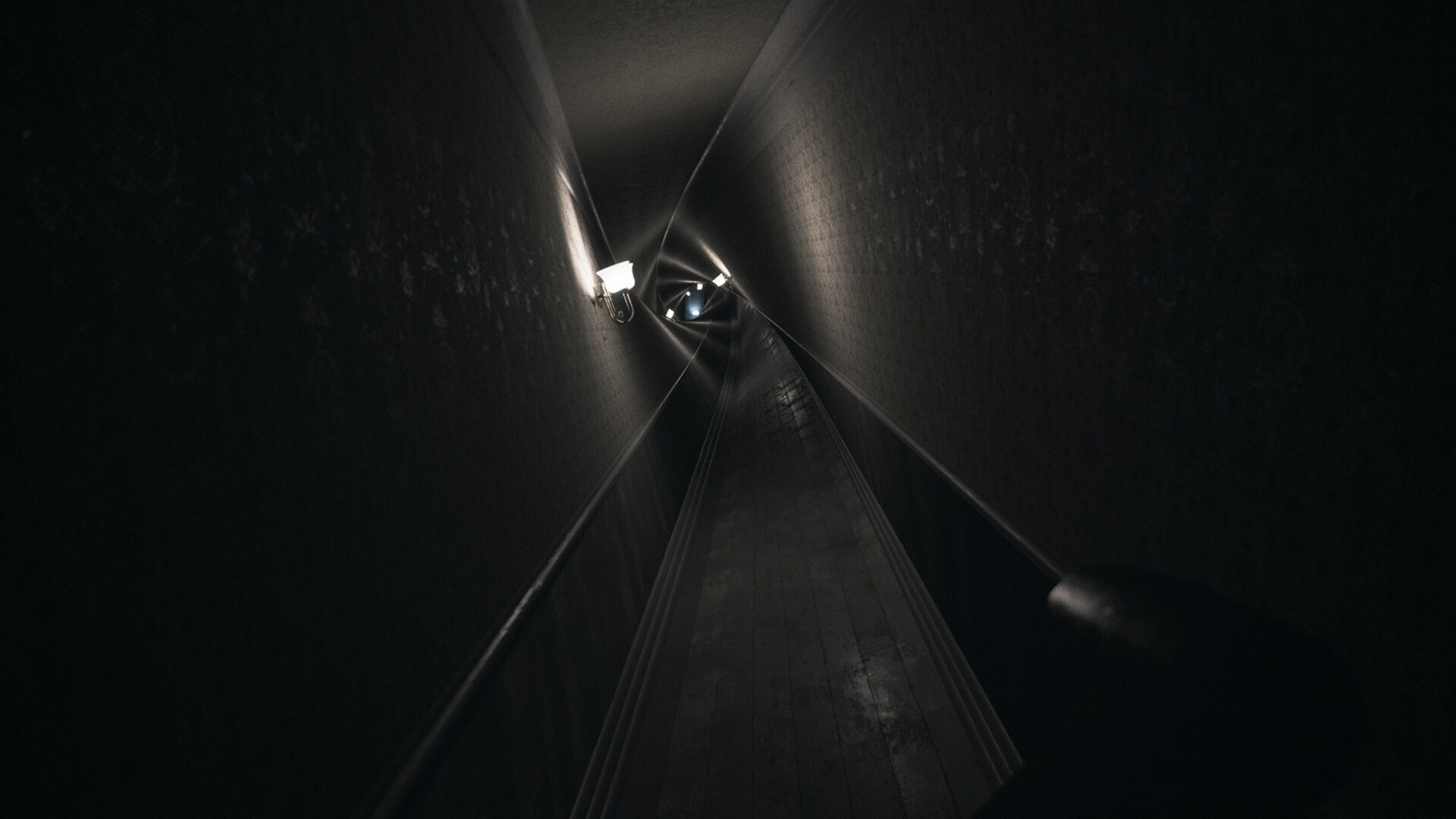Media - Video Game - Visage (2018)

Theoretically, Visage is a game that is already out there for people to play which tries to create an escape room in looping, iterative paths and deals with the topics of mental health and trauma in a way similar to how I envision Here There Be Bears.
Some things it does really well - the atmosphere is neat, and it chooses to incorporate over-tonal audio to leave the player with a sense of dread as you search your house. As you move through the narrative, there is reference to the fact that this is a game that can kill you: You have a sanity and a danger meter, which, when too low, can cause you to hallucinate and fall into the depths of madness. Fortunately, you are able to take pills that can reset your mental space back to zero if you need to. You constantly move through a labyrinth of a house, where opening a door can lead you back to a place you did not realize was possible. Some areas of the house have impossible distortions as you walk through, and the overall architecture makes little sense and feels impossible. The disorientation within the space is exceptionally successful, and the game is dotted with ghostly events: flashing lights, candles that blow out, radios and footsteps. The game feels haunted.

However, the game has some massive pitfalls that make me more comfortable in my current structural design. First of all, Visage is open world, in that you can pretty much wander the house and do whatever you want in any order. There are hundreds of every day items you can pick up, yet only a few you can actually use in any way. The inventory menu is clunky and particularly hard to handle on a console system, particularly since the pause menu never actually stops the game's time from moving forward. While danger is good to keep up, the inventory gets frustrating to work with, and your storage space is really limited.

The biggest issue of the game is the lack of a goal or focus. I found myself wandering the house, aware that I was supposed to look at things in order to discover the secrets behind who my character was and why this house is the way that it is. Unfortunately, once you start playing, the only hint at what your objective is are pop up screens that explain what you can do from time to time. This discovery based game play, which works so well in its for-bearer, PT, is less effective outside a linear game construct. Without these framing devices intrinsic to linear corridor maps, it is startlingly easy to miss the supernatural things going on around you in the game, and your sanity and danger stats can creep up with no discernible difference to the player. Also frustrating is the lack of a guiding element. In one memory section, the goal was to place a slipper from the floor to the bed, with the only indication telling you to do so to get out of the memory being some text that pops up and says "Something looks like its missing." PT thinks too highly of the intelligence of its players, leading to an overall frustrating experience for its player base.
While the fluidity and inventiveness of some of its mechanics (for instance, smashing mirrors with a sledge hammer to enter into dreamlike parallel universe portions of the house) is fantastic, I found that the game lacked an overall direction and ramping structure that properly teaches the player how to play the game.

Comments
Post a Comment